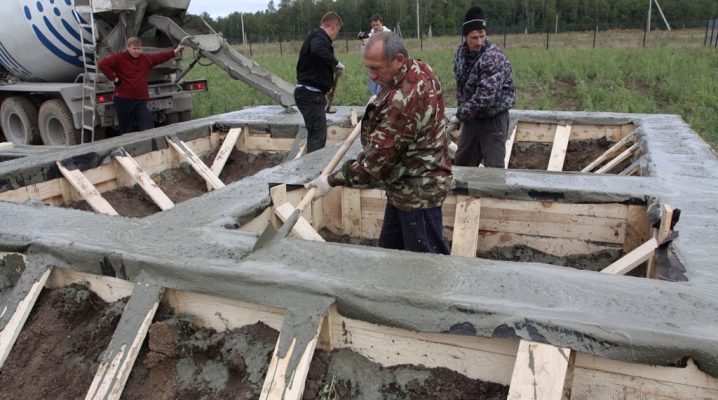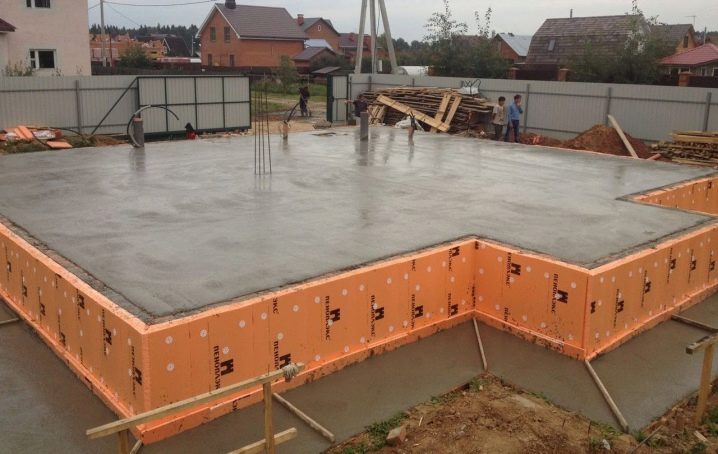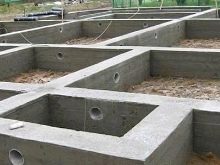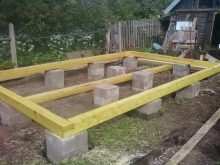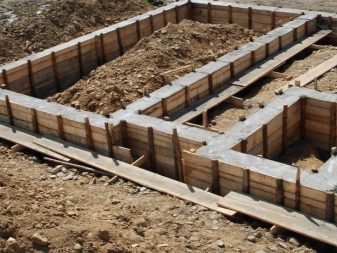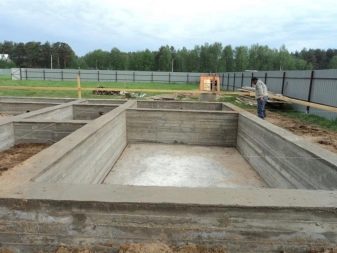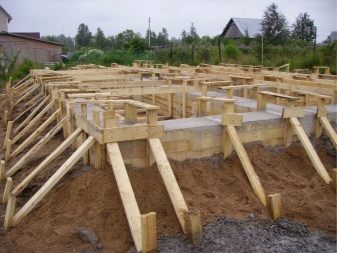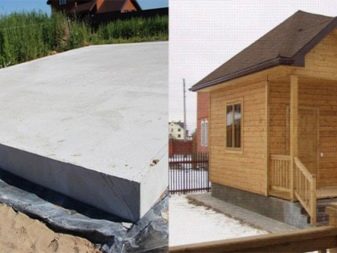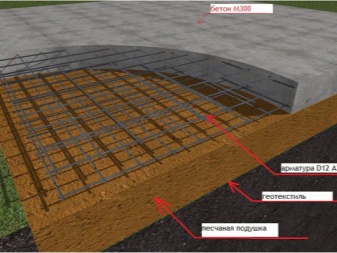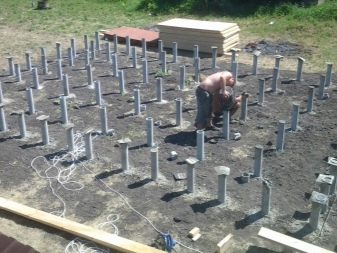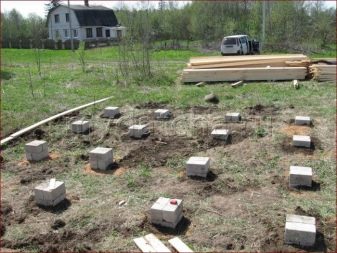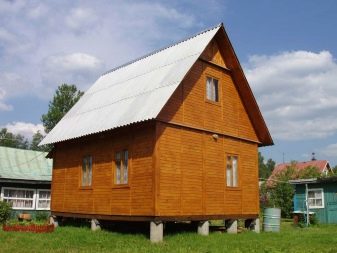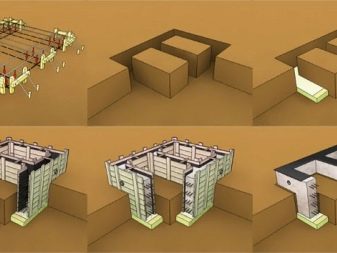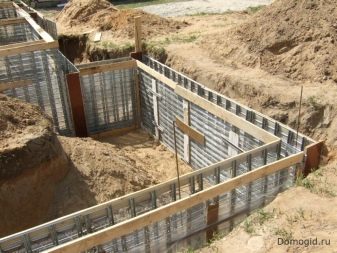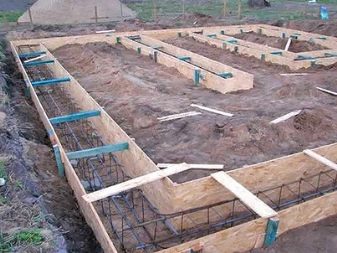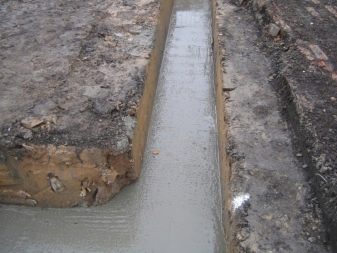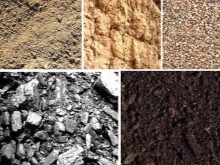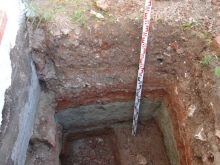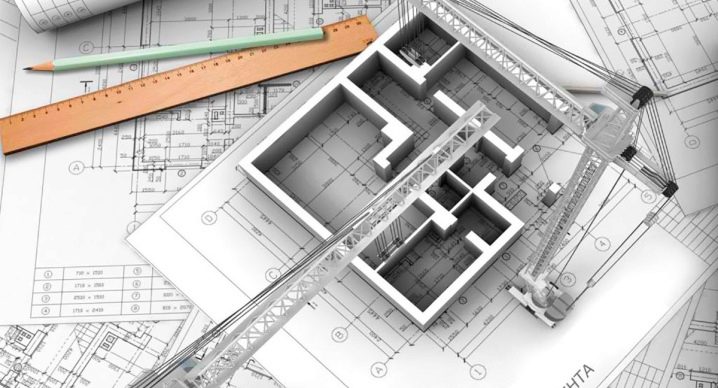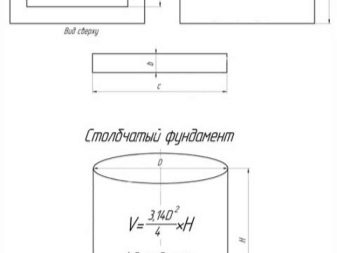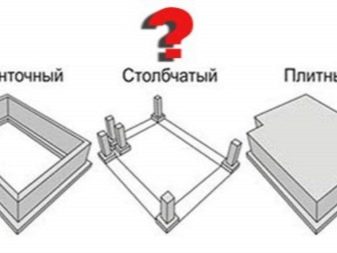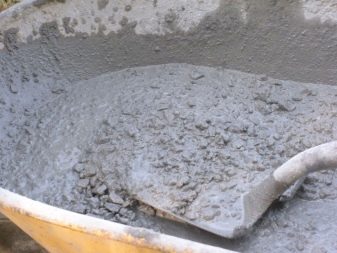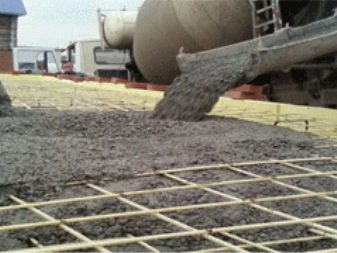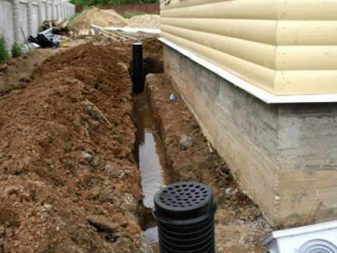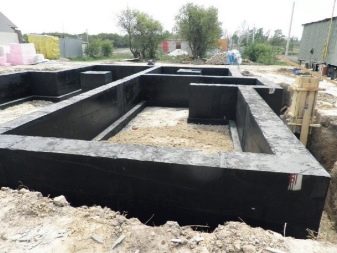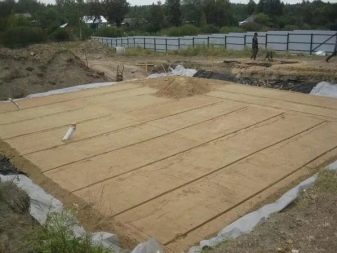Subtleties of calculating the consumption of concrete on the foundation
Building a house always begins with the construction of a solid foundation. The reliability and durability of the future home depends on how well it is built and flooded. The correctness of the calculations will save time and money. This article will discuss how to calculate the concrete on the foundation, and on what the calculations depend.
Special features
Three types of foundation can be distinguished for construction:
- tape - a strip of concrete, passing under all bearing walls, which includes iron fittings, sand, gravel and cement of a grade not lower than M200;
- slab monolithic - shallow-depth plate, equal to the entire area of the building;
- columnar - The support system of the pillars, used in the construction of small buildings without a basement, with the posts are placed around the perimeter with an interval of up to two meters.
The name of the tape foundation got its name because of the appearance and design. The tape foundation is arranged around the perimeter of the whole house, including the bearing inner walls. This design is used to ensure that the load is distributed evenly over the entire area of the base. Even with the swelling of the soil skew on the building does not occur. However, with marshy soil, this type of foundation will not work; in this case, pile type foundation is used. The tape base has a relatively large amount of work, as well as high material consumption.
Often this type of foundation with reinforced concrete floors is erected for brick or stone buildings and in the case of the basement arrangement.
It is quite simple even with the construction of their own hands. In the presence of a crane, the construction of this type of foundation will not take more than two days, and the shrinkage period is much less than that of monolithic foundations.
The advantages of the strip footing include several characteristics.
- Relatively low cost.
- Easy installation.
- Suitable for any low-rise building.
- Speed. The foundation for the construction of 100 m2 can be built with your own hands in just a week.The design of the tape base is influenced by the relief of the land plot, the type of soil, the complexity and weight of the project, the height of the groundwater, and the depth of soil freezing.
Before construction, the structure of the foundation, the materials necessary for the construction of the foundation, the level of laying, the technology of all installation work should be determined.
The slab base, due to its durability and reliability, is used for the construction of stone and brick houses.
The materials used for the construction are special plates of reinforced concrete and a cushion of rubble and sand, laid on the bottom of the pit before pouring. When building it is important to calculate the load of the future building.
The main advantages of this type of foundation: ease of installation and the possibility of construction in any type of soil. Cons: for casting it is necessary to form an ideal flat surface, as well as considerable expenses during construction due to the use of iron reinforcement and laying of the waterproofing layer. Filling of the slab basement takes place in layers of approximately 15 cm.
Pillar foundation - economical and reliable for lightweight buildings.
Among the positive characteristics are the following:
- Regardless of the season and weather conditions, this type of foundation can be easily made by hand;
- concrete piles are placed on all surfaces, even on steep slopes;
- low cost of materials.
What does it depend on?
The main question at the initial stage is to find out how much concrete it will take to manufacture the foundation in order not to waste money and at the same time to fulfill all the technological requirements.
As already mentioned, there are three types of foundation for construction: strip, slab and columnar.
If you choose a strip foundation for construction, you will need to make accurate calculations of its depth and width, which must withstand the mass of the building. The amount of concrete mix will depend on the linear dimensions of the foundation.
The heel of the tape base is equal to 30x80 cm at a minimum. But it is also necessary to adhere to the size of the ligation of the reinforcing belt, otherwise the foundation may fall apart into several fragments under the weight of the house.
When building a tape base on solid ground, its width may coincide with the width of the walls, so we expand the trenches only by the thickness of the formwork boards.And in soft soils, a small gap is left, about 10 cm, which is filled up at the end of construction with ordinary sand. Such a pillow will not allow changes in the pressure on the foundation.
From the quality indicators of the soil depends not only the complexity of the construction, but also cash costs.
For example, rocky or semi-rocky soil is distinguished by good bearing abilities, therefore it is possible to build any type of foundation on them. But sandy, silty or clayey soil belongs to the genus of strongly heaving, therefore, the type of base is selected based on the water table and the depth of soil freezing.
To determine the type of soil, there are several ways. The easiest is to make several pits throughout the land plot and consider cutting the soil. Keep in mind that literally a couple of meters away, the earth can already have completely different properties. In no case do not rely on the studies of neighbors, as the soil can be very different, and this is fraught with serious consequences in the future. According to the results of soil research from your own site, you will have an idea for yourself how deep the foundation will be laid.
Equally important is the depth of soil freezing, since the ground that is below this mark is very dense, but above it is always saturated with moisture and it tends to heave when seasonal thawing occurs. This property is also important for the calculations of the strip foundation.
Today, it is easy to find reference tables for obtaining information on the depth of the foundation by region. You can also contact the experts who will develop a project for you based on data for your region and carry out a competent calculation.
On problem soils, one solid monolithic concrete slab is most often poured. It will evenly distribute the load in case of freezing of the soil, as well as in case of swelling of the soil, the monolithic base is lifted in order to then return to its former state under its own weight.
It is also necessary to determine the mass of the future building, the approximate weight of furniture and other items that will be in the house, and also take into account the severity of snow in the winter on the roof of the house.
Formulas
To calculate the required amount of concrete mix to fill it will be necessary to find out the volume of the foundation in cubic meters.
For each type of foundation has its own method of calculation.
- Ribbon. The height is calculated according to the following formula: depth of the underground part + height of the base. The standard width of the foundation is 40 cm, but more often it is made larger depending on the thickness of the walls of the future building. Multiplying the height, width and length of the base, we obtain the required volume.
- Slab. If the foundation represents a monolithic slab of rectangular or square shape, then the calculations will be equal: the length of the house x width x thickness of the building. Technological standard dimensions of the layer thickness for single-storey buildings are from 10 cm, two-story houses with low weight are from 25 cm, for buildings made of bulky construction materials 0 cm. taking into account the basement, the depth will be 1.7 m, width 0.5, and total length 62 m. Multiply and we get 52.7 cubic meters, that is, approximately 53 m3 of concrete.
- Columnar. The number of pillars will depend on the area of the entire building. Suppose you have such pillar parameters as diameter, height and number of pillars. First you need to calculate the cross-sectional area: S = 3.14 x R (diameter).Next, calculate the volume of concrete in cubic meters of one pillar, for this multiply the area by the height. In the end, the resulting number is multiplied by the number of pillars and we get the volume of concrete that we need for the construction of the columnar foundation.
Do not forget to calculate the required amount of cement for concrete preparation. For example, to produce one cube of concrete pouring of the M300 brand, 382 kilograms of cement, 700 kilograms of sand, crushed stone of a small fraction up to one ton, and also about 220 liters of water are needed. Consequently, we have such proportions (cement, sand, crushed stone) for the manufacture of concrete M300 = 1.0: 1.7: 3.2.
Tips
Installation and pouring of the foundation - perhaps the main part of the construction of a house or cottage.
To do everything correctly and not to be mistaken in the calculations, use the advice of professionals.
- Excavating to dig trenches for strip foundations faster, but he does not always adhere to the desired dimensions. Somewhere it may turn out a little wider, somewhere a little deeper.
- When ordering concrete, you should think in advance about where it will be possible to use the surplus. For example, you can concrete track in the garden.
- If you can not cope on their own, the calculation of the cubic capacity of concrete can be ordered from experts.
- Column foundation should not be performed with too mobile or weakly bearing soils.
- For slab foundations, it is necessary to provide the site with a drainage system, so water in the event of heavy snow melt will not erode the soil under the base.
- When calculating, always lay materials with a margin, otherwise the construction may pause for a day or even longer.
- You should not load the foundation until it is completely solidified. After the casting is placed in the formwork, on the first day solidification of 30% strength occurs. A week later, about 70%. But full reliable ripening can be achieved not earlier than in a week, taking into account the air temperature and weather conditions.
- The technology of the slab foundation implies accurate correct marking.
- It is recommended to fill with concrete on a dry warm day.
To save money you should not take low-quality products, it can lead to the destruction of the house. In order to avoid serious consequences in the future, it is necessary to make the correct calculations and purchase materials of domestic proven manufacturers, similar in quality to foreign ones.
- Failure to comply with the temperature setting of concrete, inaccurate marking of the corners of the pit may lead to a distortion of the structure in the future.
- The pillow for the foundation is laid from washed sand, without admixture of clay.
- In such soils as loam or clay, the tape must be laid at least half the depth of soil freezing.
- When building, always consider the location of the communications entering the house and the thickness of the walls of the sewer pipes.
- Special attention should be waterproofing strip foundation. The slightest mistake in this matter can lead to the flooding of the basement.
- Do not use smooth rods for the reinforcement of the framework, as the concrete will slide along them.
- It is also necessary to calculate the approximate coefficient of shrinkage of the concrete solution, as any concrete during drying, decreases in size.
- With incorrect calculation and use of reinforced rods during operation, the foundation will begin to collapse.
Before you begin construction work, do not rush. Carefully make all the necessary calculations, ask for help to friends who have already passed the stage of construction of the foundation, make a plan of action, and only then get to work.
For information on how to calculate the ribbon foundation for the house, reinforcement and formwork, see the following video.
